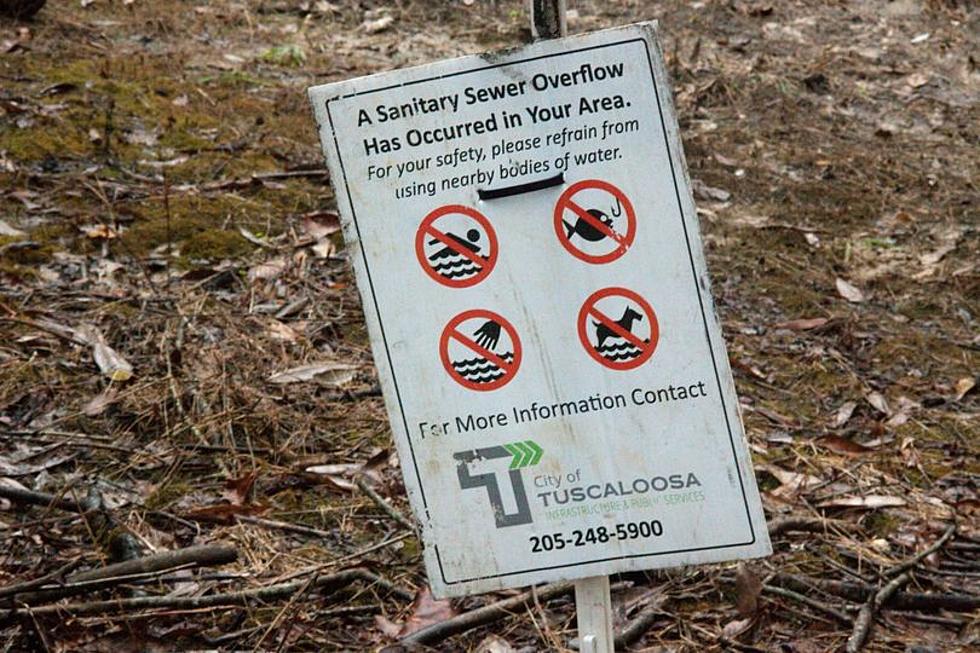
State of Alabama Sues Tuscaloosa, Says City Spilled 41 Million Gallons of Sewage Since 2018
The State of Alabama and its Department of Environmental Management sued Tuscaloosa Friday, seeking to punish the city for allegedly discharging more than 41 million gallons of sewage into local waterways since 2018.
The complaint, filed by Attorney General Steve Marshall and his staff Friday afternoon, aims to enforce the provisions of the Alabama Water Pollution Control Act, which governs entities like the city of Tuscaloosa and how they discharge pollutants.
The city has a permit issued by ADEM to operate its Hilliard N. Fletcher Water Resource Recovery Facility, which, in layman's terms, collects the wastewater flushed down drains across the area and cleans it up for reuse.
The plant, on Reese Phifer Avenue in Tuscaloosa, discharges some pollutants into Cribbs Mill Creek and ultimately the Black Warrior River. Some discharge is expected and accepted, but the permit spells out "limitations, terms, and conditions on the discharge of pollutants" into those waters.
The Friday lawsuit accuses the city of regularly violating those terms and asks Circuit Judge Brad Almond to order Tuscaloosa to clean up its act and "assess a civil penalty against the Permittee [...] for each and every violation of the Permits alleged in this Complaint."

The lawsuit claims the city missed 18 deadlines to submit mandatory Discharge Monitoring Reports between September 2018 and October 2022, but none were received more than three days after they were due.
Of greater concern are the state's allegations that 111 tests since 2018 showed the city exceeded the maximum amount of specific pollutants allowed in their discharge, including more than 40 violations so far in 2023.
Some violations were marginal. Others were not, like in August 2023, when a discharge monitor found a water sample with more than 811 times the limit of E. Coli allowed in the city's permits.
Finally, the lawsuit outlines more than 360 different Sanitary Sewer Overflows across the city since August 2018 - that's when untreated sewage escapes the city's infrastructure before it reaches the wastewater plant. That typically happens after a period of heavy rain or when a line is broken.
The state says Tuscaloosa has committed 363 SSOs and illegally discharged 41,901,511 gallons of pollutants in the last six years. The lion's share of that total came from six significant SSOs of more than a million gallons each, five of which came in February and March 2020 when West Alabama was slammed with unprecedented, unseasonal amounts of rain.
In the lawsuit, Attorney General Marshall said the state is legally allowed "to recover civil penalties for such permit violations and unpermitted discharges of pollutants, providing for a maximum of $25,000.00 per violation." The state asks Almond to assess a penalty against the city "for each and every violation of the Permits alleged in this Complaint," which could mean a huge financial blow to the city.
Richard Rush, a spokesperson for the City of Tuscaloosa, gave the Thread a statement about the lawsuit Monday.
"The City is working alongside ADEM to expand and enhance our water & sewer system to continually meet the needs of Tuscaloosa’s rapidly growing population," Rush said. "The City is halfway through a ten-year capital improvements plan to upgrade the current infrastructure. Tuscaloosa is committed to having the best in class water quality, and will continue to maintain the highest levels of transparency.”
For more on the lawsuit as it develops, stay connected to the Tuscaloosa Thread.
Top Stories from the Tuscaloosa Thread (9/18 - 9/25)
More From Tuscaloosa Thread









